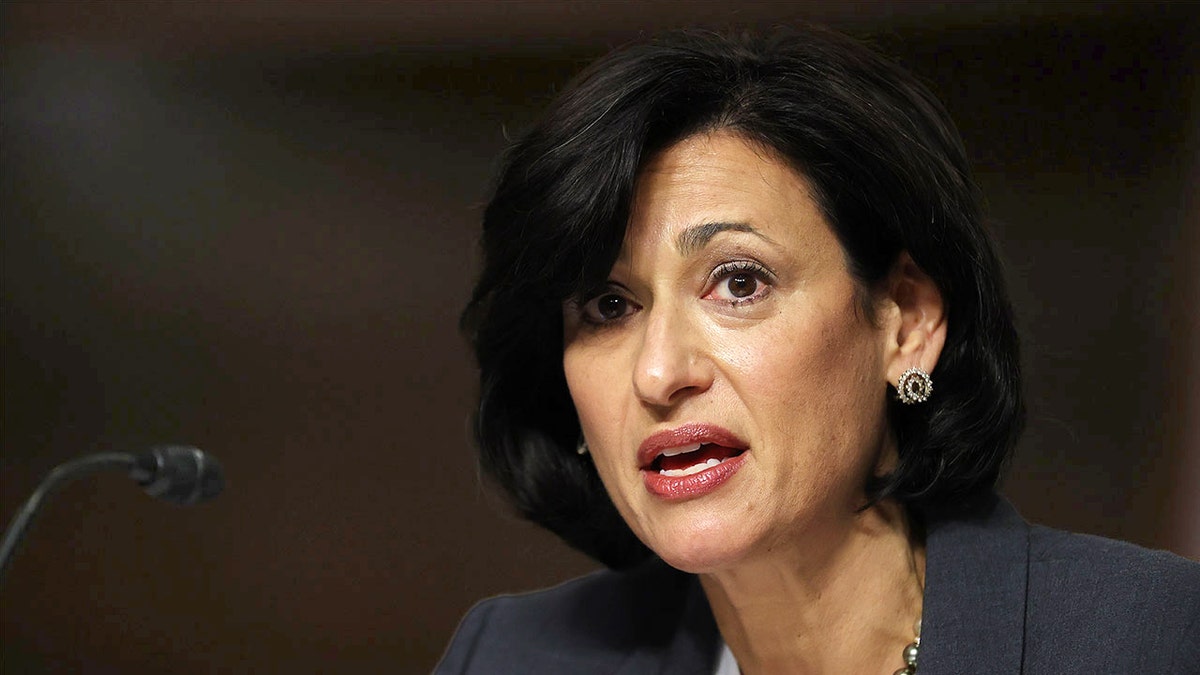COVID vaccine authorized for kids using 'very flimsy' data: Dr. Marty Makary
Fox News medical contributor Dr. Marty Makary discusses the safety of COVID vaccines for children under five years old and weighs in on the Wuhan lab leak theory.
On Saturday, CDC Director Rochelle Walensky announced a new recommendation to vaccinate all 20 million children 6 months to 5 years of age. Here are some things left out of the announcement that parents should know.
1. The research was inconclusive
The studies were too small to achieve statistical significance when evaluating efficacy against mild or severe COVID-19 infection. As a result, the FDA allowed both companies to extrapolate effectiveness by measuring antibody levels, pointing to data from older children and adults.
PARENTS NOW TO DECIDE IF THEY WILL GET THEIR CHILDREN VACCINATED AGAINST COVID-19
There were no cases of severe COVID illness in either the vaccine or placebo group. The Moderna vaccine had 4,774 children and the Pfizer vaccine had 4,526 (including those who received the placebo).
Pfizer concluded that their vaccine was 80% effective in preventing symptomatic COVID-19, but based it on 3 cases in the vaccine group and 7 cases in the placebo group in a subset of children who received a third dose.
Even this was not statistically significant. In fact, it had a confidence statistic so wide, you could drive an aircraft carrier through it. (They reported the largest confidence interval I have ever seen in my 20-year research career). At one end of the range of possibilities indicated by the confidence interval, the vaccine could be associated with a 370% increased risk of getting COVID-19. The Moderna trial reported a short-term efficacy of 38% in preventing symptomatic illness–an effect well-known to be transient.
FLORIDA GOV. RON DESANTIS SAYS WHITE HOUSE LYING ABOUT COVID VACCINE POLICY
Ironically, there were more overall hospitalizations (unspecified) in the vaccine group. Out of a total of 7 children requiring hospitalization, 6 were in the vaccine group and 1 was in the placebo group, which was half as large.

Atlanta, Georgia, USA - August 28, 2011: Close up of entrance sign for Centers for Disease Control and Prevention. Sign located near the 1700 block of Clifton Road in Atlanta, Georgia, on the Emory University campus. Vertical composition. (iStock) (iStock)
The CDC even said in its own slides at their deliberation meeting that data assessing efficacy were poor, characterizing them as "very low certainty" and noting that there are "very serious concerns for imprecision due to study size". They also noted the very short follow-up time of 1.3 months.
2. The FDA lowered their standards for acceptable vaccine efficacy needed to approve
In 2020, the FDA and public health officials said they would authorize a COVID vaccine that showed at least a 50% efficacy. But weeks before the vaccines were authorized for babies and toddlers, the FDA’s Dr. Peter Marks lowered the pre-set bar, saying on May 6, "If these vaccines seem to be mirroring efficacy in adults and just seem to be less effective against Omicron like they are for adults, we will probably still authorize."
There is absolutely zero clinical evidence to support vaccinating healthy children who already had COVID. Natural immunity, inexplicably ignored by public health officials, confers strong protection against severe disease.
3. Most children have natural immunity
The CDC reported reported that, as of February 2022, 75% of children 0-17 years-old already had COVID-19. Given how rampant the Omicron strain has circulated since then, upwards of 80-90% of children have likely had COVID-19. There is absolutely zero clinical evidence to support vaccinating healthy children who already had COVID. Natural immunity, inexplicably ignored by public health officials, confers strong protection against severe disease.
4. Safety was based on a small sample
The small size of the studies in children under 5 makes it nearly impossible to observe rates of rare complications such as myocarditis, which occurs in 1 in 2,650 12-17 year-old boys after the 2nd dose. This complication has been associated with EKG changes in children and even concerning MRI findings months after recovering from myocarditis.
The New England Journal of Medicine reported one case of vaccine-associated myocarditis death in a 22-year-old in an Israeli population study. Keep in mind that babies can’t tell you when they have myocarditis.
JEAN-PIERRE FLOUNDERS QUESTIONS ON BIDEN'S LAST COVID TEST
Each of the Moderna and Pfizer COVID studies in children under 5 reported one serious adverse event after receiving the vaccine. Less serious adverse events (pain, swelling, local reactions) were similar across the vaccine and placebo groups (7.7% vs 4.1% for Moderna; 1% vs 1.5% for Pfizer). These data do suggest a good safety profile, likely due to the low dose given. However, time will tell.
As Dr. Eric Rubin, the editor-in-chief of the New England Journal of Medicine, said in October 2021, "But we’re never going to learn about how safe this vaccine is unless we start giving it. That’s just the way it goes."
Establishing safety takes time. The infant rotavirus vaccine, Rotashield, was first thought to be safe. In the original trial, the adverse event (an intestinal malfunction requiring surgery) had been noted in 5 of 10,054 vaccine recipients, but the side effect was not deemed statistically significant. Ultimately, that vaccine was pulled from the market after many more complications were observed. Similarly, J&J’s vaccine was bannered to be safe until the FDA said otherwise.
By comparison, the polio vaccine was tested in 1.8 million children over a year before it was broadly recommended.
5. Healthy children have a very low risk of a serious consequence from COVID-19
Healthy children have a radically different risk profile and a different need for vaccination compared to children with comorbid conditions. A German population study found that all deaths in children 5-17 were in children with a comorbidity. That is, no healthy child 5-17 died in that country unvaccinated.

Though MIS-C is rare, doctors say parents should monitor their children for associated symptoms. (iStock)
CLICK HERE TO GET THE OPINION NEWSLETTER
Alasdair Munro analyzed UK data and determined that 75% of deaths of children from COVID in the UK occurred in the 8% of children who have other serious health issues. That’s why the risk-benefit ratio is radically different for a child with comorbidity than a healthy child.
The CDC’s risk analysis lumps all children together. It also makes the mistake of counting hospitalizations and death where COVID was an incidental finding. An NHS report found that up to 68% of COVID hospitalization are not "for" COVID.

Lurie Children's hospital registered nurse Carolyn Ruyle prepares a dose of a Pfizer COVID-19 vaccine at Lurie Children's hospital Friday, Nov. 5, 2021, in Chicago. Health officials hailed shots for kids ages 5 to 11 as a major breakthrough after more than 18 months of illness, hospitalizations, deaths and disrupted education. (AP Photo/Nam Y. Huh)
For children with a medical condition such as diabetes or immune suppression, I would recommend COVID vaccination with two doses 8 to 12 weeks apart, if the child does not already have natural immunity. The case to vaccinate healthy children is not compelling.
6. CDC’s announcement lacked humility
On Saturday, a beaming Dr. Walensky said "We now know based on rigorous scientific review that the vaccines….can be used safely and effectively in children under 5." The review might have been rigorous, but the underlying data was not.

FILE – Centers for Disease Control and Prevention Director Rochelle Walensky testifies before the Senate Health, Education, Labor, and Pensions Committee about the ongoing response to the COVID-19 pandemic in the Dirksen Senate Office Building on Capitol Hill on November 4, 2021 in Washington, D.C. (Chip Somodevilla/Getty)
CLICK HERE TO GET THE FOX NEWS APP
A more appropriate announcement would have been "We approved the COVID vaccine for babies and toddlers based on very little data. While we believe it is safe in this age group, the study size was too low to make a definitive conclusion about safety. Moreover, the studies were conducted in children who did not have COVID previously."
Less absolutism and more humility by public health officials would go a long way in rebuilding public trust. Not surprisingly, only 18% of parents said they were planning give the COVID vaccine to their child under five anytime soon.




